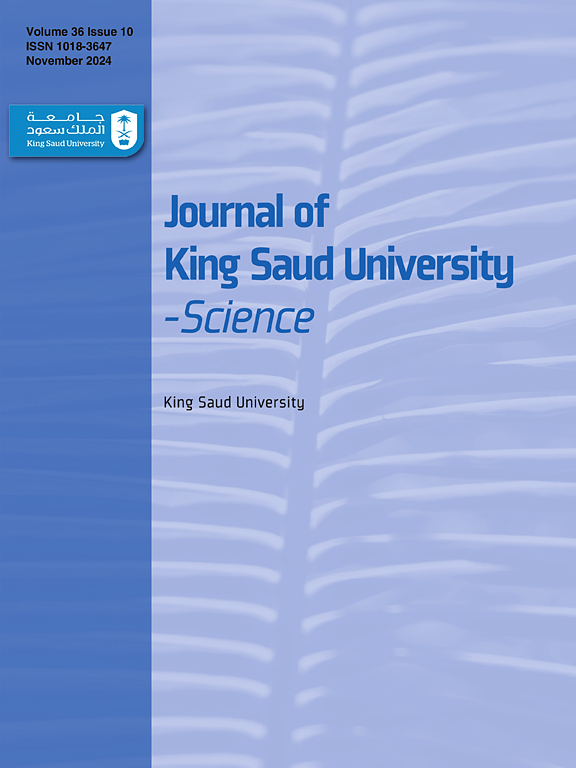Nanomedicine for ovarian cancer: Enhancing pharmacokinetics and biodistribution
IF 3.6
3区 综合性期刊
Q1 MULTIDISCIPLINARY SCIENCES
引用次数: 0
Abstract
Ovarian cancer continues to pose a substantial healthcare obstacle, demanding the development of novel strategies to improve therapeutic results. Nanomedicine’s introduction has created novel opportunities for the targeted delivery of drugs in the treatment of ovarian cancer. This review article presents a thorough examination of the pharmacokinetics and biodistribution of nanoparticles designed to target ovarian cancer, emphasizing their capacity to significantly transform therapeutic approaches. Furthermore, we investigate the function of nanoparticles as vehicles for precise pharmaceutical administration, placing particular emphasis on the benefits they offer in comparison to traditional methodologies. We explore the intricacies of biodistribution, including the influence of formulations, surface modifications, and nanoparticle size on their internal distribution. In addition, we provide a comprehensive analysis of the importance of pharmacokinetics in the enhancement of drug delivery. This includes a synopsis of critical parameters including absorption, distribution, metabolism, and excretion, and their connection to the therapeutic effectiveness of nanoparticle-based approaches for ovarian cancer. A fundamental component of this review is a critical evaluation of the approaches utilized to improve the biodistribution and pharmacokinetics of nanoparticles designed to target ovarian cancer. Moreover, we have highlighted significant research studies and clinical trials of the in vivo behavior of nanoparticles and their practical applications. Nevertheless, we refrain from obfuscating over the extant obstacles and constraints, such as possible toxicity issues and impediments to the process of clinical translation. The paper concludes by engaging in a discussion on emerging technologies and future prospects, with a specific emphasis on the potential of personalized medicine in the context of ovarian cancer treatment.
纳米药物治疗卵巢癌:增强药代动力学和生物分布
卵巢癌继续构成一个实质性的保健障碍,要求发展新的战略,以提高治疗效果。纳米医学的引入为卵巢癌治疗的靶向药物递送创造了新的机会。这篇综述文章介绍了针对卵巢癌的纳米颗粒的药代动力学和生物分布的全面检查,强调了它们显著改变治疗方法的能力。此外,我们研究了纳米颗粒作为精确给药载体的功能,特别强调了它们与传统方法相比所提供的好处。我们探索生物分布的复杂性,包括配方、表面修饰和纳米颗粒尺寸对其内部分布的影响。此外,我们还全面分析了药代动力学在增强药物传递中的重要性。这包括关键参数的概述,包括吸收、分布、代谢和排泄,以及它们与基于纳米颗粒的卵巢癌治疗方法的治疗效果的联系。本综述的一个基本组成部分是对用于改善卵巢癌纳米颗粒生物分布和药代动力学的方法进行关键评估。此外,我们还强调了纳米颗粒在体内行为及其实际应用的重要研究和临床试验。然而,我们避免混淆现有的障碍和限制,如可能的毒性问题和临床翻译过程的障碍。论文最后讨论了新兴技术和未来前景,特别强调了卵巢癌治疗中个性化医疗的潜力。
本文章由计算机程序翻译,如有差异,请以英文原文为准。
求助全文
约1分钟内获得全文
求助全文
来源期刊

Journal of King Saud University - Science
Multidisciplinary-Multidisciplinary
CiteScore
7.20
自引率
2.60%
发文量
642
审稿时长
49 days
期刊介绍:
Journal of King Saud University – Science is an official refereed publication of King Saud University and the publishing services is provided by Elsevier. It publishes peer-reviewed research articles in the fields of physics, astronomy, mathematics, statistics, chemistry, biochemistry, earth sciences, life and environmental sciences on the basis of scientific originality and interdisciplinary interest. It is devoted primarily to research papers but short communications, reviews and book reviews are also included. The editorial board and associated editors, composed of prominent scientists from around the world, are representative of the disciplines covered by the journal.
 求助内容:
求助内容: 应助结果提醒方式:
应助结果提醒方式:


